
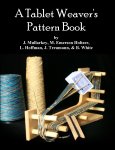



Tablet Weaving Looms
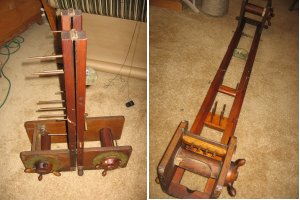
| This is a loom that was gifted to me from very good friends that live out in the
country. I know little about it, but I can't wait to learn more. As I learn more, I'll let you know here.
For lots more pictures and some musings and wild guesses click here |
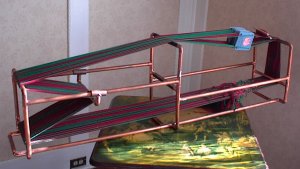
|
This loom I made from 1/2" copper tubing. This is a nice sturdy loom, but you can't create a continuous warp on it. I use this for designs that aren't balanced (uneven turns forward and backward). The cards are tied individually, and attached to fishing swivel hooks with rubberbands. The rubberbands help to get an even tension, and the swivel hooks allow me to work excess twist out of individual cards. |

| This is my new Louet Kombo 40. This is the first tablet woven project I've done on a standard loom. I really like the fact that you can wind longer warps with even tension, but I'm having trouble with the fact that you can't get the twist out that builds up behind the cards. The patterns have to have balanced repeats that remove the twist, and that limits the complexity of the design. |
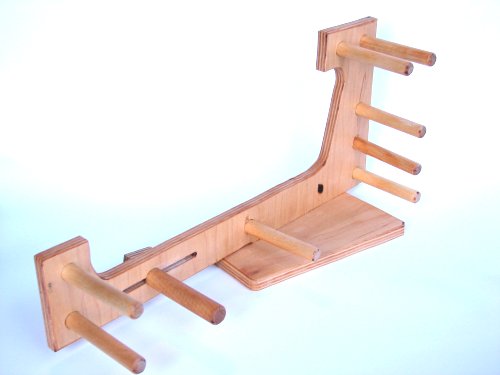
| I bought this tiny tablet loom (15" long, and 8" tall) and a tiny tnkle loom at Convergence this year (2006). So many people ask how I weave the bands, and now it is nice I have something really small and portable I can warp up and show them. It isn't very good for projects that may require multiple packs turning different directions, but it is wonderful for simple threaded-in patterns. I was really surprised how much warp it can accommodate. I got a finished band 54" long from this small loom. It is made by Palmer Looms, and is even signed and numbered on the bottom. |
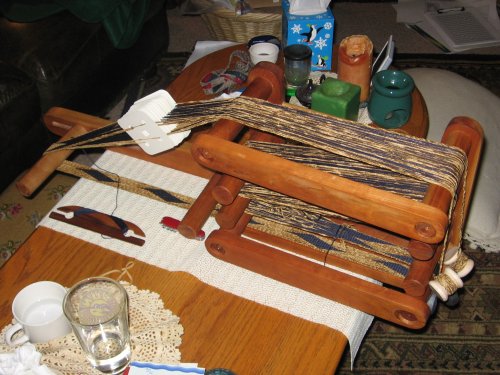
| This loom I acquired at a Rendezvous (historical re-enactors). The woman I bought it from said her husband was making her an even bigger one! I love this loom. It is currently my primary tablet weaving loom. Easy to put circular warps onto it. Lots of room for the cards. The loom is 36" long and the wood dowels are over 1" thick. The two rails help support the warp and keep the dowels from bowing. In this picture you can see that I've weighted the two selvedge cards instead of having them tied in like the rest of the cards. I like to do this so that I can turn the cards foward only and release the excess twist that builds up. Turning forward only makes nice clean selvedges. |